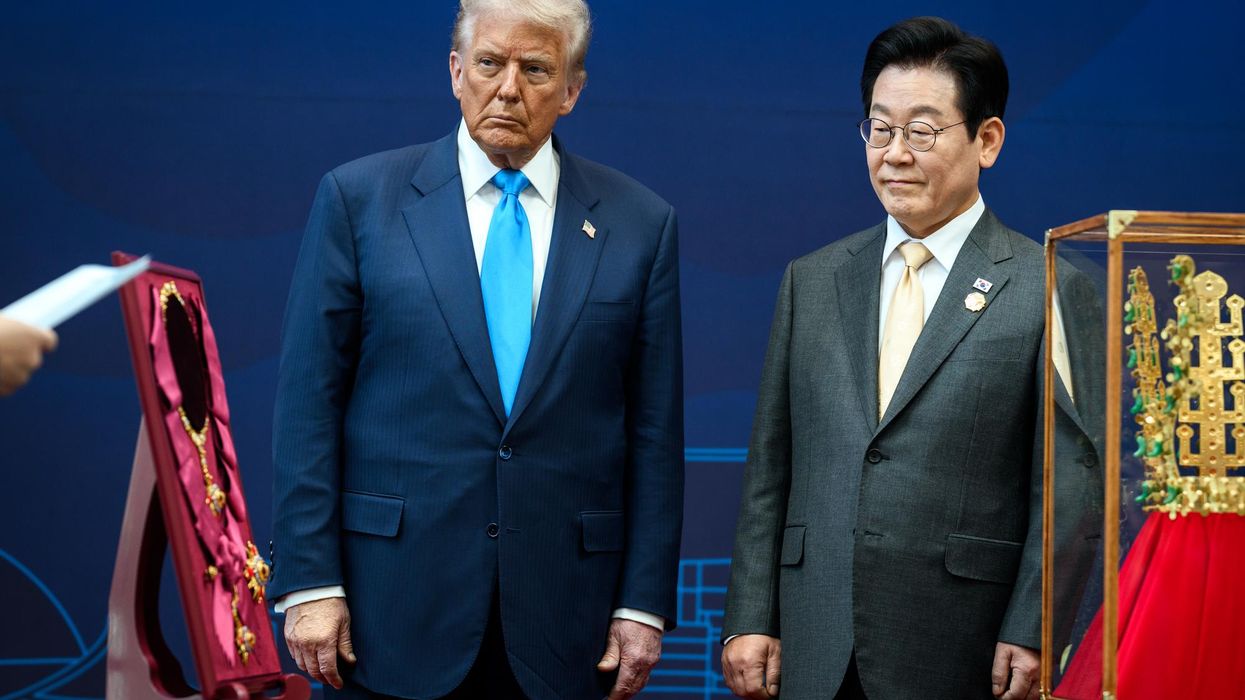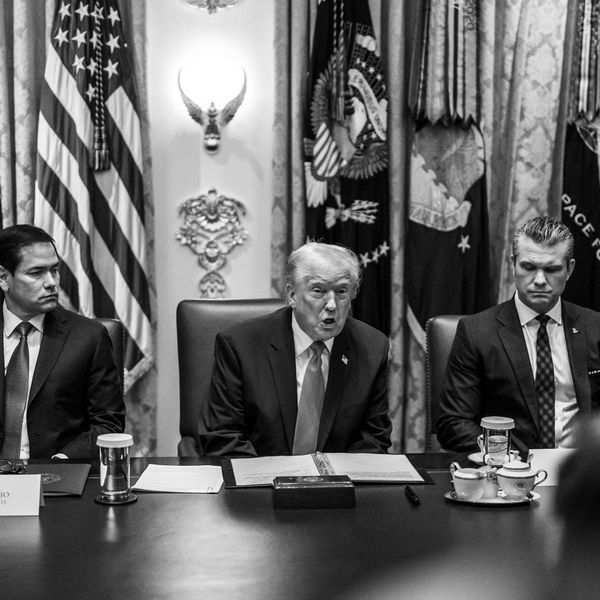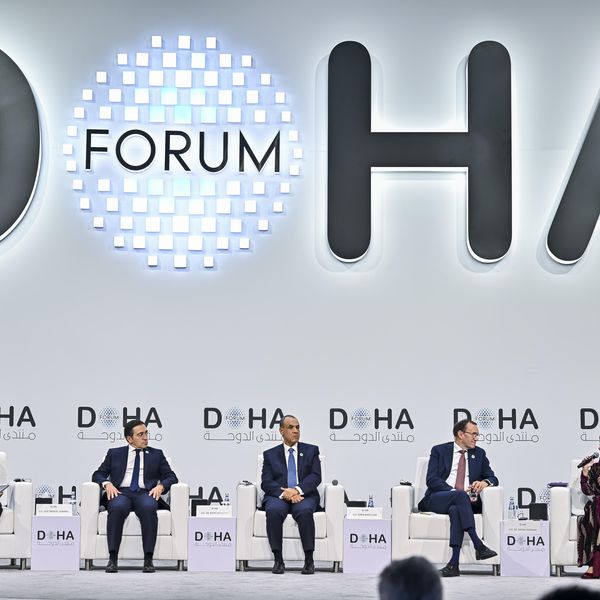When it comes to the reported draft framework agreement between the U.S. and Russia, and its place in the Ukraine peace process, a quote by Winston Churchill (on the British victory at El Alamein) may be appropriate: “Now this is not the end. It is not even the beginning of the end. But it is, perhaps, the end of the beginning.” This is because at long last, this document engages with the concrete, detailed issues that will have to be resolved if peace is to be achieved.
The plan has apparently been worked out between U.S. envoy Steve Witkoff and Russian envoy Kirill Dmitriev (together reportedly with Vice President JD Vance, Secretary of State Marco Rubio and the president's son-in-law Jared Kushner) but a great deal about it is highly unclear (Update: On Thursday night, Axios reported the full plan, which reflects earlier reporting, here).
The Trump administration reportedly believes that a deal is imminent, but the Russian government has been at pains to stress that no agreement has yet been reached. We do not know if Moscow will try to exact further concessions; the details of several key points have not been revealed; and above all, it may be impossible to get the Ukrainian government to agree to essential elements, unless the Trump administration is prepared to bring extremely heavy pressure to bear on both Ukraine and America’s European allies.
It has already been reported that President Zelensky has rejected the plan and is working with European governments to propose an alternative — though so far, nothing that the Europeans have proposed stands the remotest chance of being accepted by Moscow.
Among the most difficult points for Ukraine will be the reported draft agreement that Ukraine should withdraw from the approximately 14% of the Donbas that it still holds, and that it has sacrificed tens of thousands of lives to retain. But with the key Ukrainian town of Pokrovsk seemingly close to falling, the Trump administration apparently believes that the rest of the Donbas is sooner or later bound to fall too, and there is no point in losing more Ukrainian lives in a vain attempt to keep it, and also risk Ukrainian military collapse and losing more territory beyond the Donbas.
The draft agreement also reportedly softens the blow for Ukraine by stating that the area handed over will be demilitarized and controlled by neutral peacekeepers. In the other two provinces claimed (but only partially occupied) by Russia, Zaporizhia and Kherson, the ceasefire line will run along the existing front line, and Russia will abandon its demand for the whole of these provinces.
In a huge concession to Russia however, the Trump administration — and possibly other countries like Turkey and Qatar, that helped mediate this proposed deal — is willing to recognize Russian legal sovereignty over the Donbas and Crimea (which would also imply the lifting of many U.S. sanctions on Russia) though it does not expect Ukraine to do so.
The draft agreement apparently excludes long-range missiles for Ukraine and would impose limits on the size of the Ukrainian armed forces, though we do not know how great these limits will be. The Ukrainian government agreed to the principle of arms limitations at the Istanbul talks in March 2022, but has since categorically rejected the idea.
The draft agreement also reportedly includes unspecified U.S. security guarantees to Ukraine, and a formal Russian acknowledgment (already stated by President Putin and Foreign Minister Lavrov) of Ukraine’s right to join the European Union, in return for the exclusion of NATO membership for Ukraine. It has not been revealed however whether this would require a change to the Ukrainian constitution to restore the previous commitment to neutrality, something that could be hard to pass through the Ukrainian parliament.
This is also true of another key element of the reported plan — the establishment of Russian as a second official language in Ukraine. This is a neuralgic issue for Ukrainian ethnic nationalists, but they should recognize and respond with gratitude to the fact that in the face of the Russian invasion the great majority of Russians and Russian speakers have remained loyal to Ukraine.
Predictably, the leaked plan has drawn immediate denunciation from both Ukrainian and Western sources, with it being described as a demand for Ukraine’s “capitulation.” This is mistaken. As the Quincy Institute has long pointed out, an agreement that leaves three quarters of Ukraine independent and with a path to EU membership would in fact be a Ukrainian victory, albeit a qualified one.
This should be obvious if you look at the Russian government’s goal at the start of the war of turning the whole of Ukraine into a client state, or alternatively of seizing the whole of eastern and southern Ukraine. It would also be a Ukrainian victory in terms of the 500-year-long history of Russian, Polish and Turkish rule over Ukraine. And by way of additional evidence, you would only have to listen to the howls of protest that an agreement along these lines will evoke from Russian hardliners, who still dream of achieving Russian maximalist aims. European comments that this draft agreement concedes Russia’s “maximalist demands” are therefore nonsense.
When it comes to the Western security guarantees to Ukraine promised (but not specified) in the draft agreement, it is crucial to recognize that in international affairs and in history there is no such thing as an absolute guarantee, let alone a permanent one. There are however a whole set of commitments that can be included in order to deter future Russian aggression: the peace agreement should be ratified by the U.N. Security Council and endorsed by the BRICS; Western economic sanctions should be not ended but suspended, with a snap-back clause stating that they will automatically resume if Russia resumes aggression; designated long-range missiles and other arms can be stockpiled with a legally binding guarantee that they will be provided to Ukraine if Russia restarts the war.
Above all, Ukraine should retain the complete and guaranteed right to receive and develop the defensive weapons that throughout this war have played a key part in slowing the Russian advance to a crawl and inflicting immense casualties on the Russian army. Because in the end, the greatest deterrent by far against Russia starting a new war is how badly its armed forces have suffered and performed in this war. If Russia has achieved its basic stated goals in Ukraine, would any future Russian government really want to go through this again?
Certain Western officials, politicians, and commentators believe, and have stated openly, that keeping the Ukraine War going is “money well spent” because it weakens Russia without sacrificing U.S. lives. But apart from the deep immorality of sacrificing Ukrainian lives for this goal, the longer the war goes on the greater the risk that Ukraine will suffer a far greater defeat, Russia a far greater victory, and the U.S. a far greater humiliation.
Given the growing evidence of Ukrainian military weakness and Russian ability to press forward with its offensives, simple prudence dictates the search for an early peace on reasonable terms. That is what the present plan promises, and everyone who truly has Ukraine’s and Europe’s interests at heart should support it.
- A Trump offer that Putin cannot refuse ›
- Diplomacy Watch: Ukraine faces failure — and fate — in Pokrovsk ›
- Critics of Ukraine peace deal must answer: What's the alternative? | Responsible Statecraft ›
- Is the EU already trying to sabotage new Ukraine peace plan? | Responsible Statecraft ›
- The Europeans pushing the NATO poison pill | Responsible Statecraft ›
















